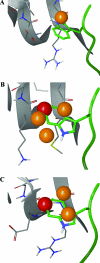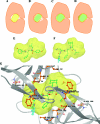Rational approaches to improving selectivity in drug design
- PMID: 22239221
- PMCID: PMC3285144
- DOI: 10.1021/jm2010332
Rational approaches to improving selectivity in drug design
Figures








References
-
- Lazaridis T. Binding Affinity and Specificity from Computational Studies. Curr. Org. Chem. 2002, 6, 1319–1332.
-
- Cheng A. C.Predicting Selectivity and Druggability in Drug Discovery. In Annual Reports in Computational Chemistry; Wheeler R. A., Spellmeyer D. C., Eds.; Elsevier: Amsterdam, 2008; Vol. 4, Chapter 2, pp 23–37.
-
- Ortiz A. R.; Gomez-Puertas P.; Leo-Macias A.; Lopez-Romero P.; Lopez-Vinas E.; Morreale A.; Murcia M.; Wang K. Computational Approaches to Model Ligand Selectivity in Drug Design. Curr. Top. Med. Chem. 2006, 6, 41–55. - PubMed
-
- Cavalli A.; Poluzzi E.; De Ponti F.; Recanatini M. Toward a Pharmacophore for Drugs Inducing the Long QT Syndrome: Insights from a CoMFA Study of HERG K+ Channel Blockers. J. Med. Chem. 2002, 45, 3844–3853. - PubMed
Publication types
MeSH terms
Substances
Grants and funding
LinkOut - more resources
Full Text Sources
Other Literature Sources
Chemical Information
Medical

